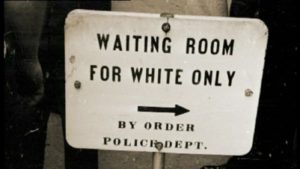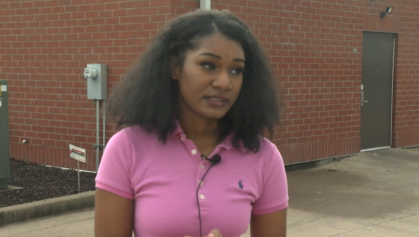May 18 marks the 120th anniversary of the seminal Supreme Court decision Plessy v. Ferguson, which cemented Jim Crow segregation as the law of the land. The ruling, which promoted the intellectually dishonest notion of “separate but equal” in the American apartheid system, was not replaced until the Brown v. Board of Education decision in 1954. And yet, the consequences of Plessy still haunt us today.
The plaintiff in the case, Homer Plessy was a Black man who could pass for white — an octoroon, or seven-eighths white and one-eighth Black. An activist, he challenged the Separate Car Act, which was passed in 1890 by the Louisiana legislature and mandated separate but equal accommodations for Blacks and whites. Plessy boarded the whites-only car of a railroad train, announced he was Black and was arrested. The law was challenged before the Supreme Court on the grounds that it was a violation of the Thirteenth and Fourteenth Amendments. However, the court did not see it that way. In a 7-1 decision, the high court upheld the Louisiana law. Writing for the majority, Justice Henry Brown wrote:
A statute which implies merely a legal distinction between the white and colored races – has no tendency to destroy the legal equality of the two races. … The object of the Fourteenth Amendment was undoubtedly to enforce the absolute equality of the two races before the law, but in the nature of things it could not have been intended to abolish distinctions based upon color, or to enforce social, as distinguished from political equality, or a commingling of the two races upon terms unsatisfactory to either.
Justice John Harlan — the son of a wealthy Kentucky slave-owning family who became a civil rights advocate — was the lone dissenting voice. The only justice to oppose the 1883 decision overturning the Civil Rights Act of 1875, Harlan foresaw the harm of the Plessy ruling:
Our Constitution is color-blind, and neither knows nor tolerates classes among citizens. In respect of civil rights, all citizens are equal before the law. … The present decision, it may well be apprehended, will not only stimulate aggressions, more or less brutal and irritating, upon the admitted rights of colored citizens, but will encourage the belief that it is possible, by means of state enactments, to defeat the beneficent purposes which the people of the United States had in view when they adopted the recent amendments of the Constitution.
Now, 120 years later, legal experts, civil rights advocates and constitutional scholars are weighing in on how much progress we have made — or have not made — since Plessy.
“I agree that we are a lot better off today than 100 years ago. But I am also very clear that we have a long way to go before America can be said to live up to its ideals of equal opportunity and fairness for all,” said Reggie Shuford, the executive director of the American Civil Liberties Union of Pennsylvania. A Black southerner from North Carolina and a civil rights lawyer, Shuford told Atlanta Black Star that progress has been made, but conditionally.
“There can be no doubt that America has made great strides since Plessy and even since Brown,” Shuford said, noting that it took nearly 60 years before Plessy was repudiated by the landmark 1954 school desegregation case. As evidence of progress, he pointed to President Obama’s commencement address at Howard University on May 7.
“If you had to choose one moment in history in which you could be born, and you didn’t know ahead of time who you were going to be — what nationality, what gender, what race, whether you’d be rich or poor, gay or straight, what faith you’d be born into — you wouldn’t choose 100 years ago,” the president said. “You wouldn’t choose the ’50s, or the ’60s, or the ’70s. You’d choose right now.”
“I agree,” Shuford said in response to the president’s remarks. “That does not mean, however, that there does not remain further work to be done before America can achieve its promise of equality and justice for all. While Plessy’s de jure segregation and explicit racism no longer explain the majority of today’s racial inequality, structural racism and implicit bias do. By every meaningful measure, Blacks continue to lag behind our white counterparts. There exist serious racial disparities in educational achievement, the criminal justice system, health outcomes, home ownership, employment, wealth and participation in our democracy. Mass incarceration, voter suppression and poverty disproportionately impact Black Americans,” he added.
Meanwhile, Vinay Harpalani, Associate Professor of Law at Savannah Law School, takes a somewhat different approach.
“First, I would say Plessy helps to show us how racism has evolved in America,” Harpalani — whose scholarship focuses on race, education and constitutional law — told Atlanta Black Star. “Rather than being eradicated, it has simply changed form. Until the Civil War and ratification of the Reconstruction Amendments, racism was manifested largely through slavery and its badges and incidents. Many Black people were quite literally property, and even those who were not (i.e., free Black Americans) lived with compromised freedoms and liberties,” Harpalani noted. “The Dred Scott decision epitomized this, as the U.S. Supreme Court reaffirmed not only slavery, but also ruled that Black people were not citizens and did not have even the most basic rights of citizenship.”
In addition, Harpalani noted that there was an evolution following the Civil War, with the brief promise of Reconstruction, which led to Jim Crow backlash.
“But the end of Reconstruction allowed Jim Crow laws to come into effect. Plessy epitomized this, as it was the Supreme Court’s validation of Jim Crow,” he said. “Black people were not longer literally property, but racism continued through the social separation of White and Black Americans, with the latter being in the inferior position. Needless to say, this positioning also compromised most of the rights of citizenship that Black Americans supposedly gained through the Fourteenth Amendment.”
Further, when the Supreme Court decision in Brown invalidated Plessy’s “separate but equal doctrine” in public schools, it did not actually overturn Plessy, Harpalani notes. Brown eliminated segregation “with all deliberate speed.”
“This not only allowed Jim Crow to continue, but also allowed racism to morph into its current colorblind form — facial neutrality, but with implicit biases, stereotypes, dog whistles, de facto segregation, and mass incarceration,” Harpalani argued. “Black people are no longer subject to formal Jim Crow laws, but there is the ‘new Jim Crow’ which is eloquently discussed by professor Michelle Alexander, and which I think extends beyond incarceration. Most ironically, the Brown decision — which was once seen as epitomizing racial equality — is now cited by the Supreme Court as representing the ‘colorblindness’ which allows and perpetuates informal racism,” he added.
Shuford places the legacy of Plessy and the struggle against institutional racism within the broader context of other forms of discrimination taking place today.
“Obviously, other groups also are targeted for unequal treatment. Consider, for example, members of LGBT communities. [North Carolina’s] HB2 – the ‘bathroom law’ – is an underhanded way to push back against the success of marriage equality and to treat transgender individuals as second-class citizens,” Shuford said. “We should be mindful that injustice can happen at the intersections of identity. So, even though anti-LGBT laws like HB2 more explicitly target other groups, Black LGBT Americans also will be impacted. An under-reported fact is that transgender women are victims of a high degree of physical violence and murder, and the overwhelming majority of them are Black and people of color.”
Civil rights groups and the U.S. Department of Justice oppose the North Carolina law, and U.S. Attorney General Loretta Lynch has filed a lawsuit against the state. In addition to overturning Charlotte’s pro-LGBT rights ordinance and requiring students to use bathrooms based on the gender on their birth certificate, HB2 also prevents local governments from passing their own anti-discrimination laws, and increasing the minimum wage for private employers.
“This is not about bathrooms. It’s about whether or not you can codify hate and discrimination into the laws of the state,” Rev. William Barber II, head of the North Carolina NAACP and the Moral Monday movement recently told The Washington Post.
Meanwhile, Harpalani views Plessy and discrimination from the standpoint of enforcement of the law — or the lack thereof. He argues that even as Plessy is one of the most reviled Supreme Court decisions and was wrongly decided, the opposite ruling would have meant little at the time.
“While I do not disagree with that,” Harpalani said of the loathsome nature of the ruling, “I will posit that if the Plessy Court had struck down segregation, that decision would likely have gone unenforced. Plessy occurred in the aftermath of the end of Reconstruction, and without an enforcement scheme in the Southern states, Black Americans would have remained subject to segregation.”
“The reason Brown was eventually successful in breaking down de jure segregation was that the Executive Branch also supported ending segregation. Professor Derrick Bell’s theory of interest-convergence notes eliminating de jure segregation served U.S. foreign policy interests during the Cold War era. The Eisenhower, Kennedy and Johnson administrations all aided in these efforts, showing a willingness to use executive power and even federal troops to end de jure segregation. This executive will was not present in the time of Plessy,” Harpalani added.
Civil rights enforcement all comes down to the president, and the legislative branch, according to Harpalani. These are lessons from which a new generation of civil rights activists can learn. Looking at Plessy from a historical perspective, he said that “if anyone tried to enforce it, Black Americans would have faced even more lynchings and terrorism than they already did. Ultimately, the Supreme Court cannot enforce its own decisions: it has to rely on Congress and the President to do so. As such, even if Plessy had been decided differently, I believe that at the time, Black Americans would have suffered just as much, if not even more. It was only after historical and political changes which aligned elite White interests with desegregation that legal and social activism, from Brown to the Civil Rights Movement, could be successful.”



